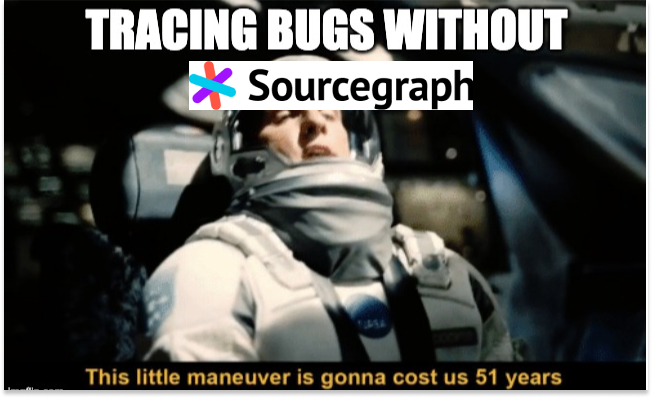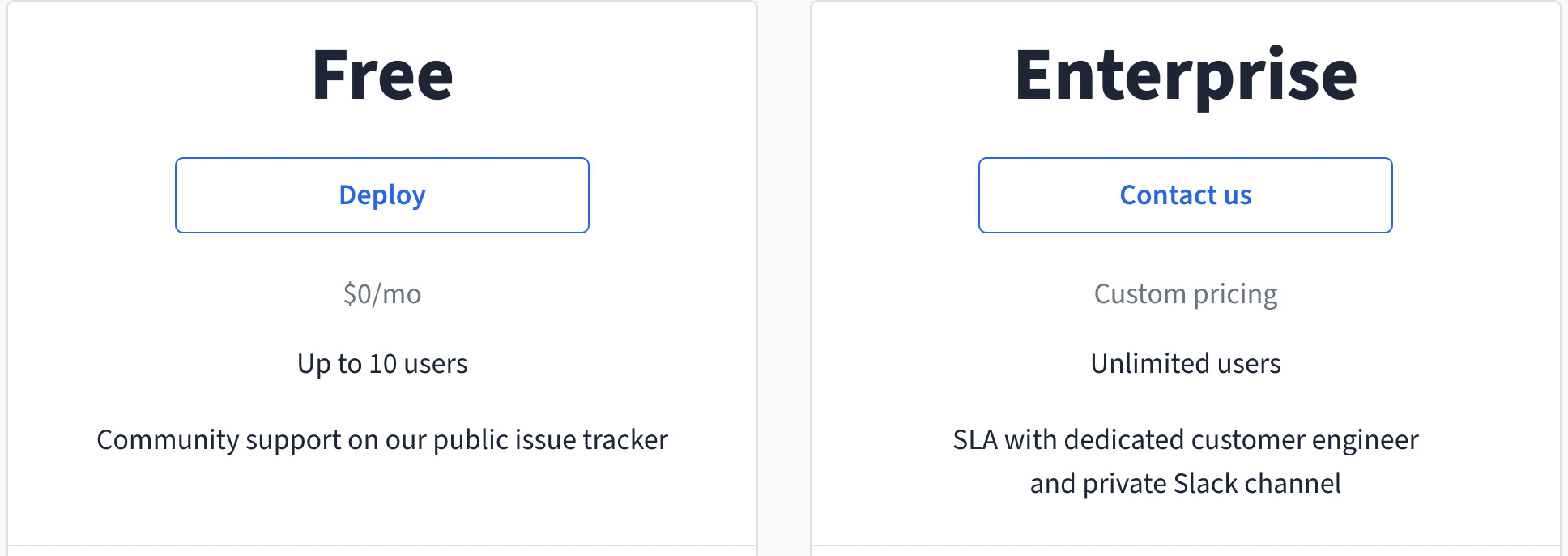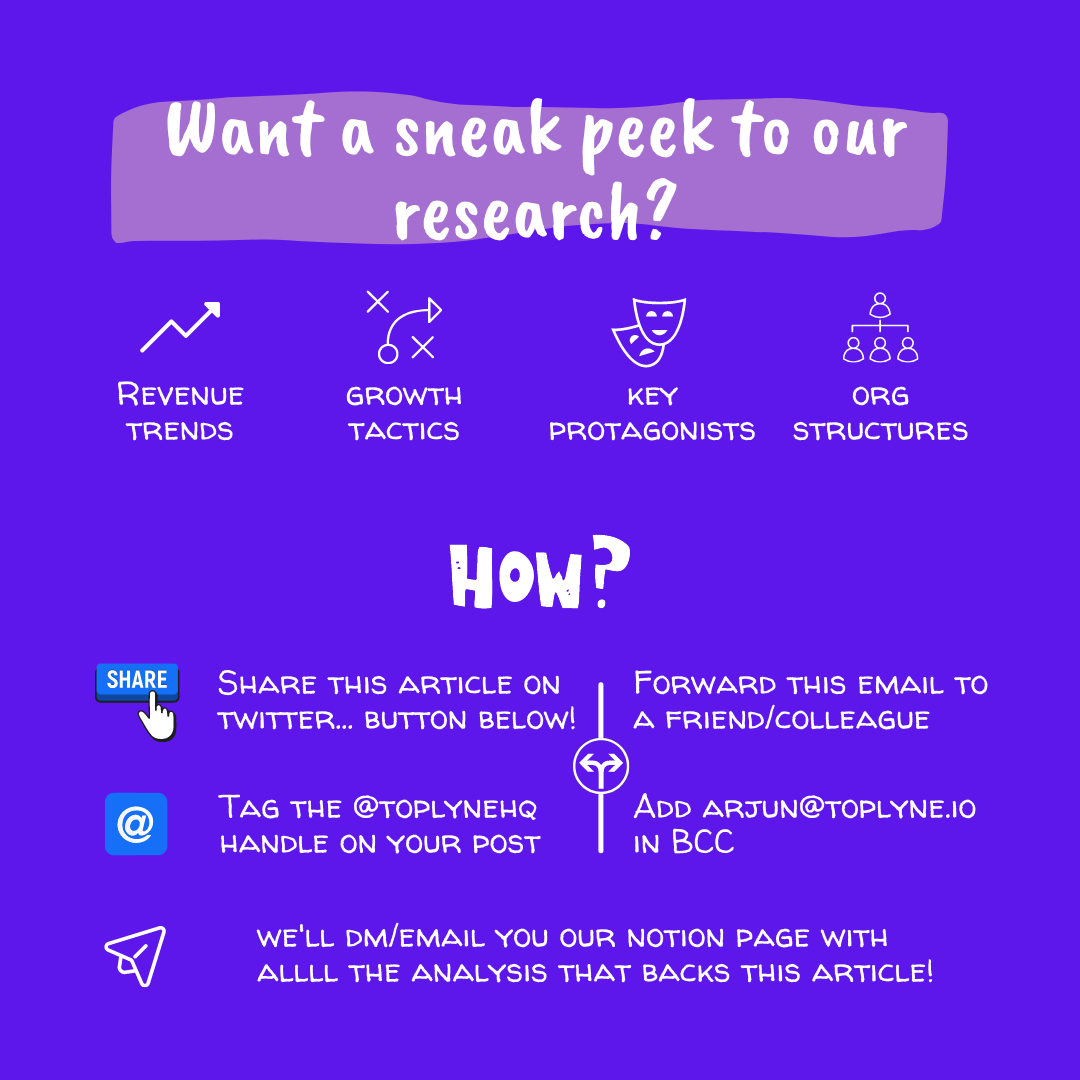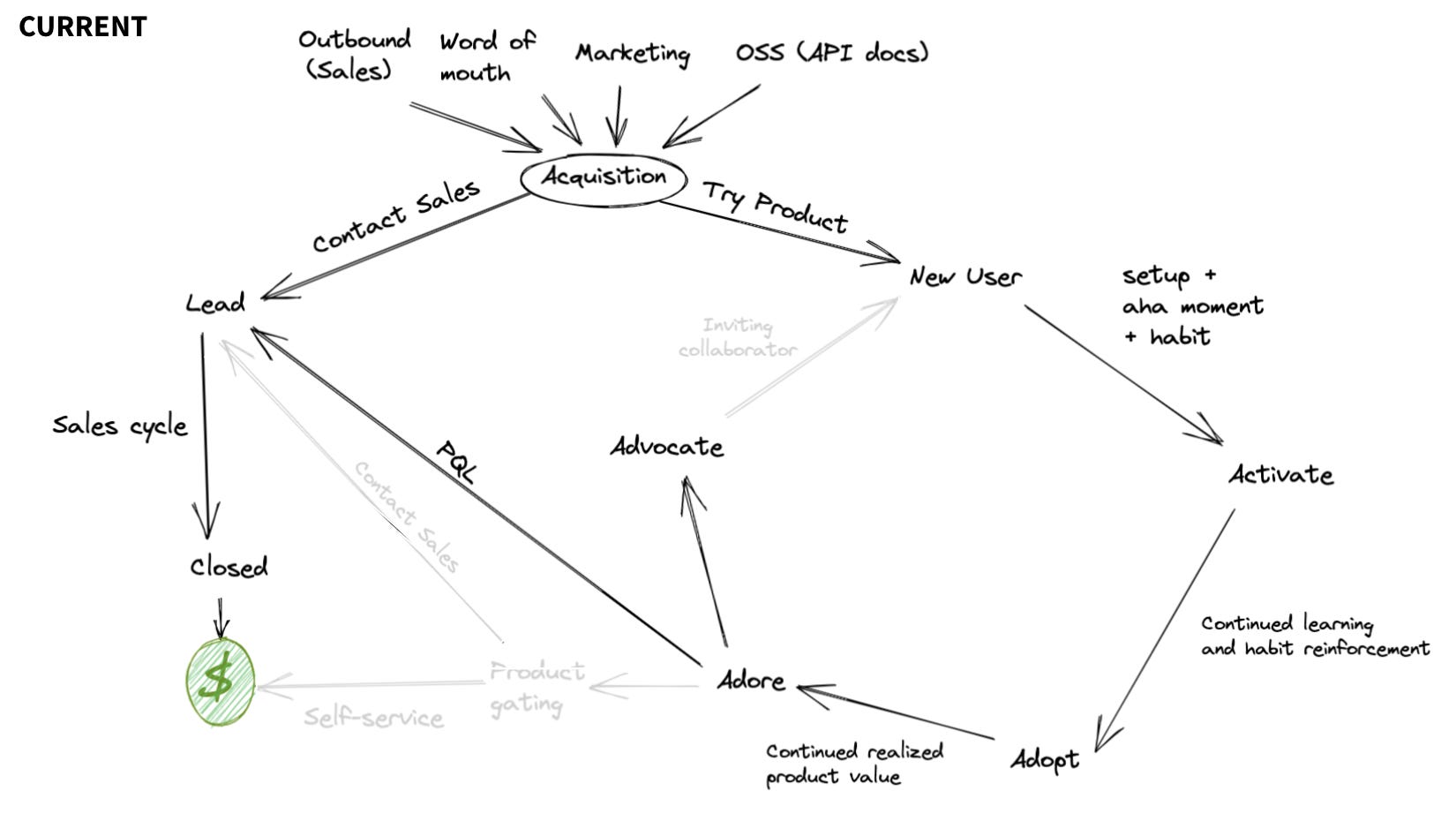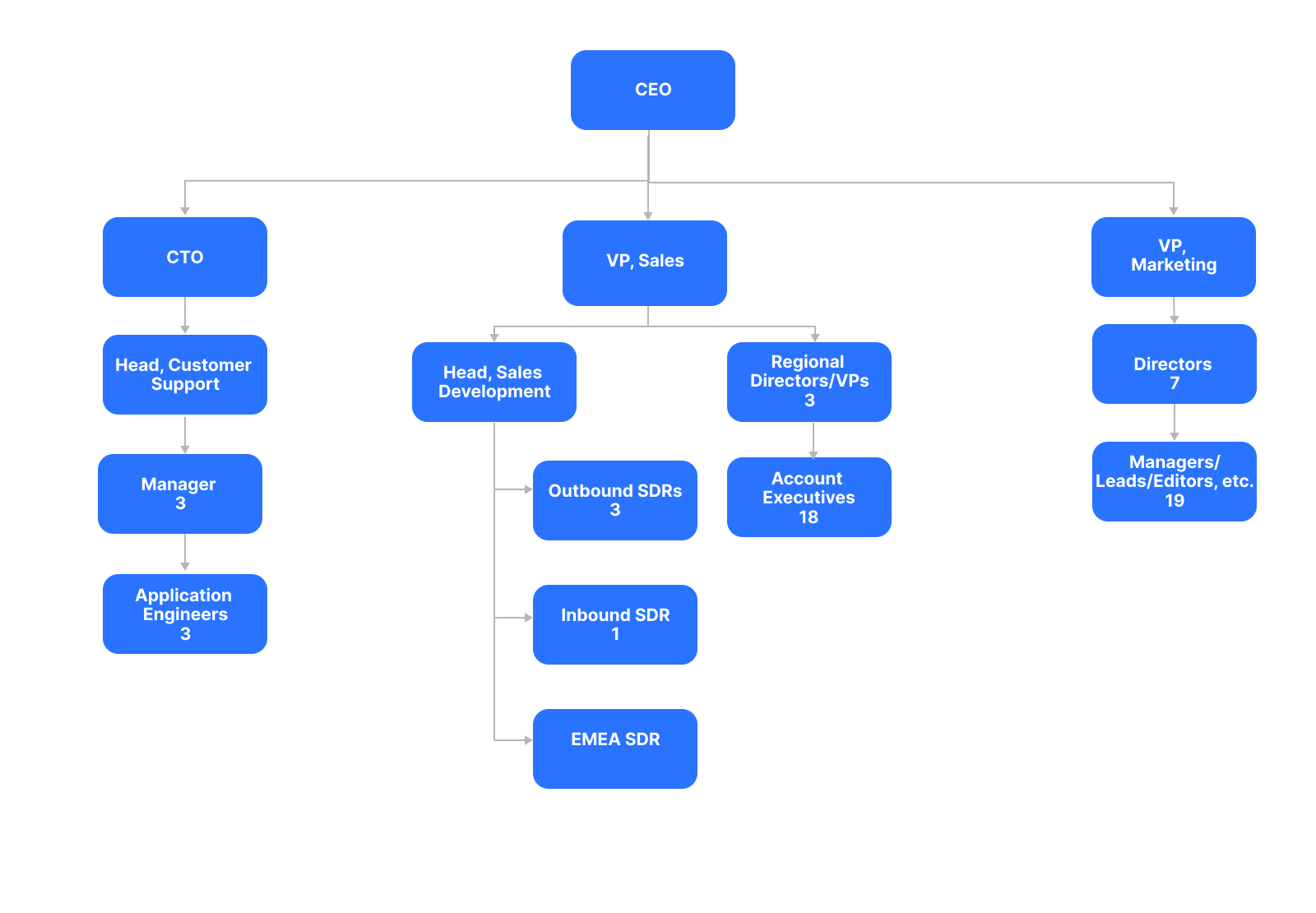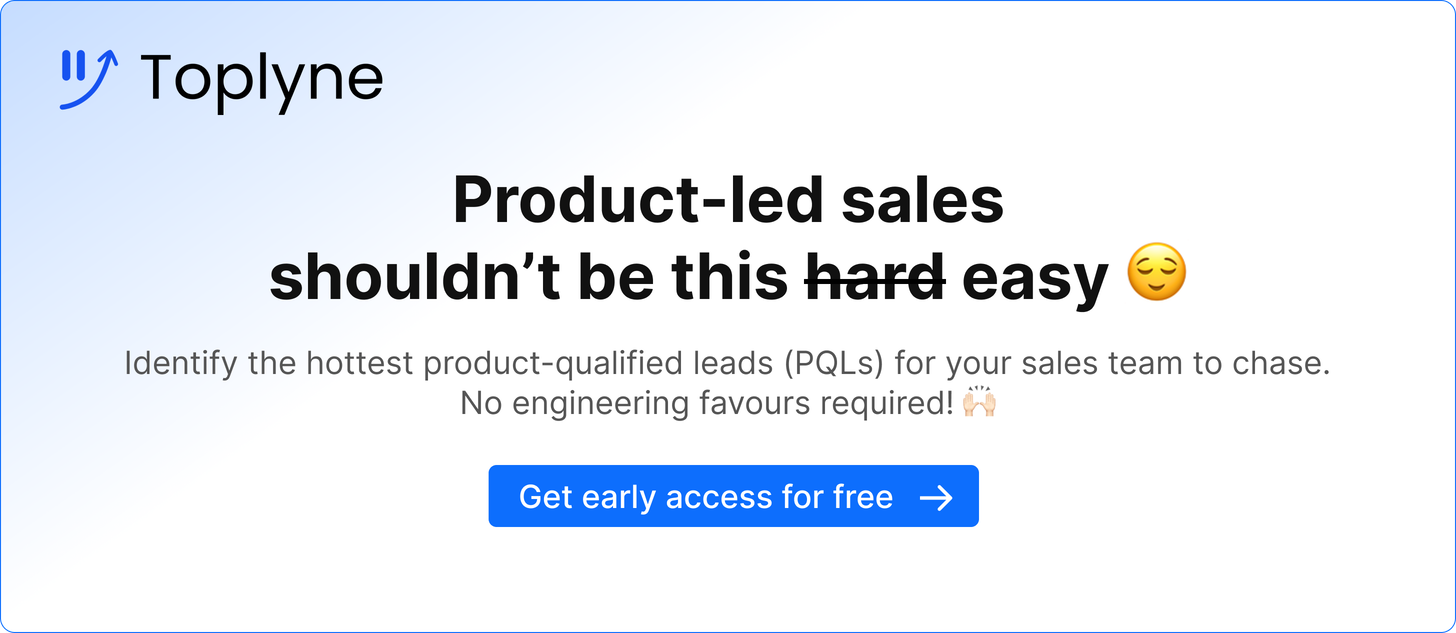Top of the lyne - Sourcegraph: Google for code
Sourcegraph: Google for codeThe growth levers and GTM strategies that powered the code-search platform to a 4x increase in revenue and a $2.625B valuationHi there! Before we jump into Sourcegraph, we have some exciting news. We just raised $2.5M in seed funding from Sequoia Capital India’s Surge, Together Fund, and angel investors from Canva, Freshworks, and Zoominfo. We’re excited to be building for a product-led world! Or surf the product-led phenomenon, as Forbes put it.
This is the age of Big Code and developers are dealing with hundreds of times the volume of code in their codebases compared to ten years ago. Every company is becoming a tech company, and an ever-diversifying product portfolio coupled with recent inconveniences caused by a bat means that along with sheer volume, the complexity of code has shot through the roof. Earlier this year, a bug in the flight systems provided by Google took down the American, Delta, and United flight booking systems. Around 200 flights were canceled, and about the same number were delayed before the bug was found and fixed. In many companies today, lines of code written decades ago are still deployed in user-facing applications and are often barely holding massive Jenga blocks together. Small codebases are a thing of the past, and the opensource explosion has compounded dependencies in the codebase, all of which developers must understand if they are to add to, debug or even recycle efficiently. Quinn Slack and Beyang Liu were no exception. Being developers themselves, they both faced this very itch at Palantir, where they realized that a lot of code they were writing had either already been written by someone else at the company, or existed in an open-source library that they weren’t aware of. Drowning in the inefficiencies of duplicated and dependent code, Quinn and Beyang set out to build something that developers like themselves could use to boost productivity by acting as a 'second brain'. They set out to build the equivalent of Google search, but for code. Sourcegraph was built to reduce the redundancies that their CEO Quinn Slack and CTO Beyang Liu faced at Palantir. Fast forward to today, the "Google for code" is now valued at $2.625 billion on the back of their $150 million Series D funding in July 2021. Today, a billion people are using products that were built by developers using Sourcegraph. 🌎 Bringing google code-search to the rest of the world
Having worked at Google, Beyang Liu had used Google’s own internal code search before and seen the value that it delivered to developers. Beyang and Quinn wanted to bring this to the outside world for all code - both open-source and code within organizations. They wanted developers to be able to “stand on the shoulders of giants.” Sourcegraph does this using srclib: the core analysis library that powers the code-search. The library works by graphing the underlying essence of code onto a language-agnostic schema, into which translators can be plugged depending on which language code is written in. Once the source code is graphed, the tool can understand code at a semantic level and is then able to jump to definitions globally, find references, and lookup documentation across all code - private or public. With (1) code-search, developers can onboard to a new codebase, find answers faster, and identify security risks. With (2) batch changes, they can then keep their code up to date, fix critical security issues, and pay down tech debt across all of their repositories. The (3) code intelligence tool provides advanced code navigation features that let developers explore source code. For a developer, using Sourcegraph extensions means that when a site is down and they get a call at 3 AM, Sourcegraph can point to the faulty code, tell them where else it is deployed, who last touched it, and show them all the error logs, reducing debugging time to minutes from hours. "Just call it code-search!" Experimenting with positioning 🧑🔬Within the first two weeks of their launch in 2013, Quinn and Beyang were using Sourcegraph to find code that someone had already written, to build... Sourcegraph. They were using Sourcegraph for Sourcegraph and already saving valuable time and effort. The advantages were immediately evident and they wanted to get the tool in the hands of every developer immediately.  Peter H. Diamandis, MD @PeterDiamandis Queries are now more valuable than dataIt sounds almost astonishing now, but they weren’t going to find true PMF for another five years. Here's why: "If you think you're building a category, you're probably fooling yourself." Sourcegraph's early positioning made the mistake of taking this advice to heart and shying away from the reality of their code-search platform: they were out to create a new category of product. So when they pitched themselves as "a new developer platform" or "code intelligence tool", they were putting themselves in competition with other existing products. In reality, their only competition was an open-source code-search tool created by Oracle (then Sun microsystems) back in 2004. It was only later, and after persistence from their early adopters that they repositioned as a code-search tool. "Don't talk about what your product is; that's an implementation detail. Instead, talk about the value it offers." Here was another piece of advice that Quinn and Beyang wish they could go back in time and take less seriously. After iterating through "developer value creation engine", and among others, "a tool that helps developers leave work at 5 PM", the value was ultimately left to the developers using their platform to decide. "We are building code-search." End of. Cloud or self-hosted? The conventional wisdom at the time (keep in mind, that this was in 2013), when faced with this choice was to default to a cloud offering. Sourcegraph was launched on the cloud, and this meant that to use their code-search, companies had to upload all of their code first by clicking on a big green button. A button that not many were eager to click, especially not companies with massive code repositories, for security reasons. The early adopters of Sourcegraph were smaller companies with low volumes of code and a handful of developers maintaining them. They just did not have the big-code problems that Sourcegraph was built to solve. Quinn was certain that the adoption would come once they built a name that the bigger companies could trust. For the first five years, Sourcegraph had limited traction and only with small companies, who probably didn’t need code-search anyway. What proved to be pivotal in the product taking off wasn’t to come until five years later when they finally moved to a self-hosted platform. After early adoption by Uber, Lyft, and Yelp, Sourcegraph code-search now has 800,000 annual users including 3 out of 5 FAANG companies. 🚀 Accelerated growth post-PMFFrom 30 employees in January 2020 to 220 in September 2021, Sourcegraph added one new person to the team almost every other day. They grew 4x in revenue year-over-year in that time. They have never lost a customer. At the core of their powerful PLG motion is a tool that developers just cannot part with once they use it. Before layering in outbound sales, developers discovered Sourcegraph by word-of-mouth, marketing, or OSS (API docs). Their growth accelerated through some powerful drivers and market forces:
If you liked this post from Top of the Lyne, why not share it? |
Older messages
The cloud proves Einstein was right! Growing 3900% for dummies, Hashicorp files for IPO, and more...
Thursday, November 11, 2021
Welcome to this week's edition of the ✨Top of the Lyne✨ newsletter. Each week we publish the hottest news from the beautiful world of product-led growth! (PLG) The outcome we're shooting for is
Algolia: Your search ends here
Tuesday, November 9, 2021
The go-to-market strategies that scaled Algolia to $100M+ in ARR!
Have you checked out the Top of the Lyne Podcast yet?
Monday, November 8, 2021
'Listen' to the growth strategies employed by the hottest product-led SaaS companies! 🚀
Is PLG just B2B viral growth? The USS Shopify thesis, memes are worth a thousand words, and more...
Thursday, November 4, 2021
Welcome to this week's edition of the ✨Top of the Lyne✨ newsletter. Each week we publish the hottest news from the beautiful world of product-led growth! (PLG) The outcome we're shooting for is
Clearbit: The rocket fuel 'enriching' PLG sales
Tuesday, November 2, 2021
The growth marketing and data-driven GTM that powers an API used by 1500+ businesses
You Might Also Like
Growth Newsletter #243
Thursday, March 6, 2025
Get F*cking Going ͏ ͏ ͏ ͏ ͏ ͏ ͏ ͏ ͏ ͏ ͏ ͏ ͏ ͏ ͏ ͏ ͏ ͏ ͏ ͏ ͏ ͏ ͏ ͏ ͏ ͏ ͏ ͏ ͏ ͏ ͏ ͏ ͏ ͏ ͏ ͏ ͏ ͏ ͏ ͏ ͏ ͏ ͏ ͏ ͏ ͏ ͏ ͏ ͏ ͏ ͏ ͏ ͏ ͏ ͏ ͏ ͏ ͏ ͏ ͏ ͏ ͏ ͏ ͏ ͏ ͏ ͏ ͏ ͏ ͏ ͏ ͏ ͏ ͏ ͏ ͏ ͏ ͏ ͏ ͏ ͏ ͏ ͏ ͏ ͏ ͏ ͏ ͏ ͏ ͏ ͏ ͏
Notion’s lost years, its near collapse during Covid, staying small to move fast, the joy and suffering of building…
Thursday, March 6, 2025
Listen now (72 mins) | Ivan Zhao (co-founder and CEO of Notion) reveals how a lean team, a passionate community, and a contrarian building product approach turned Notion into one of the most beloved
☠️ This outdated ecommerce model is dead
Thursday, March 6, 2025
If you want real success, you need to create a microbrand with a unique product that stands out. Hey Friend , Ecommerce is exploding. Worldwide online sales are expected to hit $6 trillion this year.
Yann LeCun joins buzzy AI startup
Thursday, March 6, 2025
+ how to build a board of directors View in browser Powered by ViennaUP by Tom Nugent Good morning there, Some of Europe's buzziest AI startups are in a bind. As Kai Nicol-Schwarz reports today,
[VIDEO] From $4000 to a $14B empire: The Ray Dalio Episode
Wednesday, March 5, 2025
Hard-won lessons on success, decision-making, and overcoming setbacks. design-2-header-newsletter Hi there, We're thrilled to bring you the latest episode of the Foundr Podcast featuring Ray Dalio,
The Major Forces Transforming Commerce
Wednesday, March 5, 2025
The catalysts & shifts catalyzing new opportunities and changes across the ecosystem ͏ ͏ ͏ ͏ ͏ ͏ ͏ ͏ ͏ ͏ ͏ ͏ ͏ ͏ ͏ ͏ ͏ ͏ ͏ ͏ ͏ ͏ ͏ ͏ ͏ ͏ ͏ ͏ ͏ ͏ ͏ ͏ ͏ ͏ ͏ ͏ ͏ ͏ ͏ ͏ ͏ ͏ ͏ ͏ ͏ ͏ ͏ ͏ ͏ ͏ ͏ ͏ ͏ ͏ ͏ ͏
115 new Shopify apps for you 🌟
Wednesday, March 5, 2025
New Shopify apps hand-picked for you 🙌 Week 9 Feb 24, 2025 - Mar 3, 2025 New Shopify apps hand-picked for you 🙌 What's New at Shopify? 🌱 Shop available in French, German and Spanish New ⸱ Shop ⸱ 3
🗞 What's New: Attacked after disclosing her crypto wealth online
Wednesday, March 5, 2025
Also: US indie hackers escape new red tape ͏ ͏ ͏ ͏ ͏ ͏ ͏ ͏ ͏ ͏ ͏ ͏ ͏ ͏ ͏ ͏ ͏ ͏ ͏ ͏ ͏ ͏ ͏ ͏ ͏ ͏ ͏ ͏ ͏ ͏ ͏ ͏ ͏ ͏ ͏ ͏ ͏ ͏ ͏ ͏ ͏ ͏ ͏ ͏ ͏ ͏ ͏ ͏ ͏ ͏ ͏ ͏ ͏ ͏ ͏ ͏ ͏ ͏ ͏ ͏ ͏ ͏ ͏ ͏ ͏ ͏ ͏ ͏ ͏ ͏ ͏ ͏ ͏ ͏ ͏ ͏ ͏ ͏ ͏
PSA: DO NOT DO THIS
Wednesday, March 5, 2025
Read time: 57 sec. I came across a crazy Reddit post the other day. The guy said: “I burned the ships. I left my job… before even getting a client.” 🚨Sound the alarm 🚨 This is officially a public
SketchFlow, Balzac AI, Showcase, GitLoom, Subo, and more
Wednesday, March 5, 2025
Free Temp Email Service BetaList BetaList Weekly Subo Stay on top of your subscriptions and avoid surprise charges. Balzac AI Meet Balzac, your fully autonomous AI SEO Agent RewriteBar Exclusive Perk
